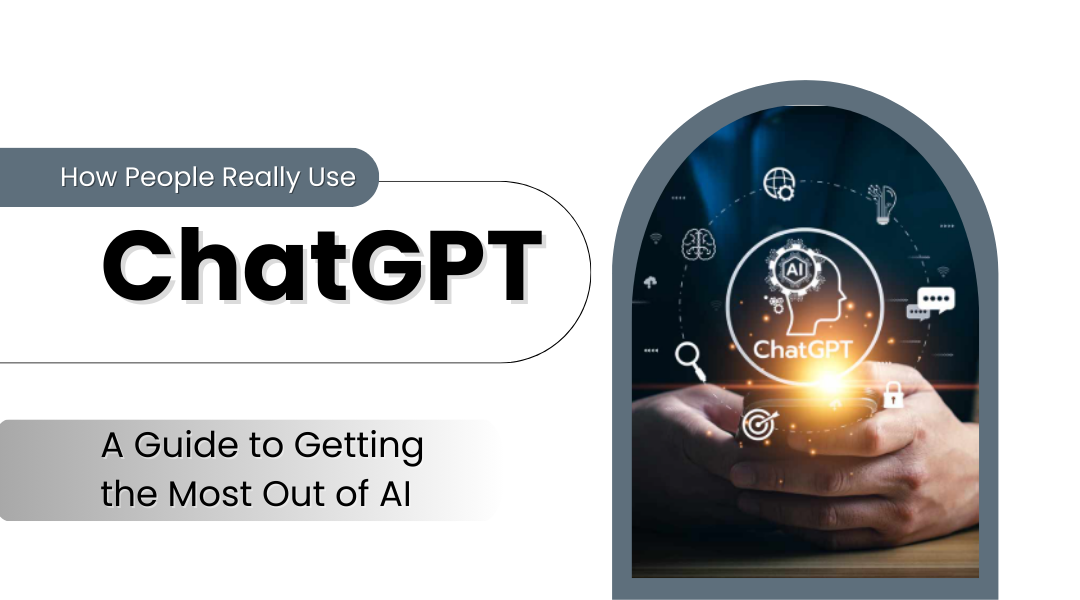ChatGPT isn’t just a tool—it’s a chameleon. Depending on what you ask, it can be your brainstorming partner, your career coach, your study buddy, or even your improv comedian. But to get the best results, you need to know how to talk to it.
Here’s a breakdown of the most common ways people use ChatGPT, along with real-world examples to help you get sharper, more useful responses.
1. Sparking Creativity (When Your Brain Feels Empty)
Stuck on ideas? ChatGPT can help jumpstart your imagination.
- “Give me 10 quirky podcast name ideas for a show about weird history facts.”
- “Help me write a short horror story set in a haunted bookstore.”
- “Suggest five unexpected metaphors to describe burnout.”
Pro tip: The more specific your request, the better. Instead of “Write a poem,” try “Write a haiku about forgetting your coffee on the roof of your car.”
2. Getting Organized (Because Adulting is Hard)
From to-do lists to meal planning, AI can help structure your chaos.
- “Create a 3-day work schedule for finishing my report—include breaks and deadlines.”
- “Plan a cheap but healthy weekly meal plan for two, with grocery list.”
- “Break down ‘learn Spanish’ into 15-minute daily tasks for a month.”
Why it works: ChatGPT acts like a productivity coach, turning vague goals into step-by-step plans.
3. Learning Made Easier (No Boring Textbooks)
Whether you’re studying or just curious, AI can simplify complex topics.
- “Explain quantum physics like I’m 10 years old.”
- “Give me three real-world examples of how supply and demand affect prices.”
- “Help me practice French by simulating a conversation at a Paris café.”
Bonus: Ask for analogies. “Compare blockchain to a library system so I can understand it better.”
4. Career & Business Boost (Work Smarter, Not Harder)
From resumes to marketing strategies, AI can polish your professional game.
- “Rewrite my resume bullet points to sound more achievement-focused.”
- “Draft a polite but firm email asking a client for overdue payment.”
- “Suggest five Instagram post ideas for a small bakery’s summer promotion.”
Real-world example: “Act like a hiring manager. Critique this cover letter for a graphic design job.”
5. Wellness & Self-Care (Your AI Therapist? Not Quite, But Close)
Need quick advice or motivation? ChatGPT can help—within limits.
- “Suggest five 5-minute stress relief techniques for work breaks.”
- “Create a beginner-friendly 20-minute home workout with no equipment.”
- “Help me draft a text to set boundaries with a overly demanding friend.”
Important: For serious mental health concerns, always consult a professional.
6. Just for Fun (Because AI Shouldn’t Be All Work)
Sometimes, you just want to mess around.
- “Tell me a joke about cats trying to take over the world.”
- “Simulate a text argument between Shakespeare and a modern rapper.”
- “Describe what my dog would say if it could talk for one day.”
Try this: “Write a Yelp review from the perspective of a disappointed pigeon.”
7. Problem-Solving (Fix Stuff Without Googling for Hours)
From tech glitches to DIY disasters, AI can troubleshoot.
- “My Wi-Fi keeps disconnecting—give me step-by-step fixes to try.”
- “Explain how to patch a hole in drywall like I’ve never held a tool before.”
- “Python error: ‘list index out of range’—what does this mean and how do I fix it?”
Key move: Ask for simple explanations first, then dig deeper if needed.
8. Writing That Doesn’t Sound Robotic (Emails, Bios, Even Love Letters)
Struggling with tone? ChatGPT can adapt to your voice.
- “Help me write a funny Tinder bio that doesn’t sound desperate.”
- “Turn this rambling work email into three clear bullet points.”
- “Draft a heartfelt thank-you note to my mentor.”
Game-changer: Feed it an example of your writing first. “Here’s how I normally write—make this sound like me.”
9. Decision-Making (Stop Overthinking It)
Use AI to weigh options without asking 10 friends.
- “List pros and cons of freelancing vs. a full-time job for my situation.”
- “Help me decide between these two vacation spots based on my preferences.”
- “What questions should I ask before adopting a second dog?”
Pro move: Ask for a “devil’s advocate” perspective to challenge your assumptions.
Final Tip: The Magic Follow-Up
ChatGPT gets better when you refine your ask.
- First prompt: “Give me tips for better sleep.”
- Follow-up: *”Now make it a 5-step checklist with brief explanations.”*
- Push further: “Rewrite it for someone who works night shifts.”
The Bottom Line
ChatGPT is like a Swiss Army knife—its usefulness depends on how you wield it. Whether you need a creativity boost, a productivity hack, or just a laugh, the key is asking with clarity and a little imagination.
